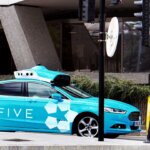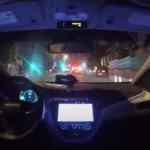UK government prepares for driverless vehicles to hit the streets
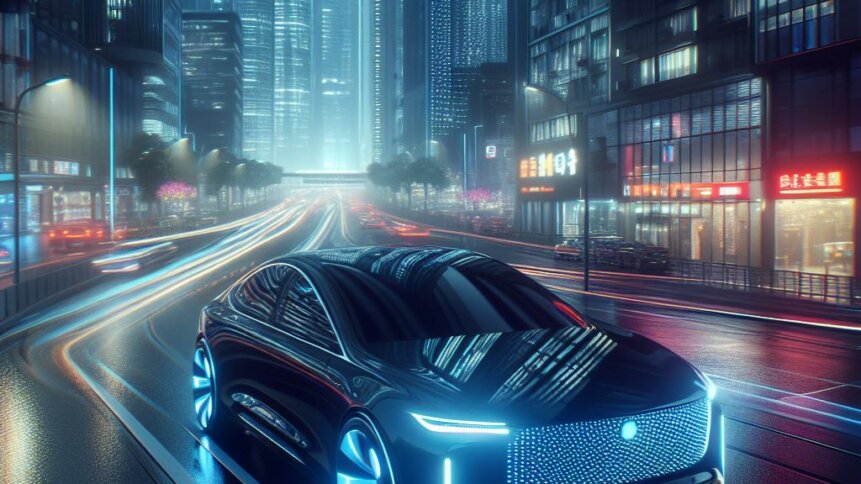
• Autonomous vehicles “to make traffic lights redundant” says British lord.
• Automated Vehicles Bill close to becoming law in the UK.
• How far can technology be an answer to infrastructural neglect?
Although autonomous vehicles haven’t really hit the UK’s roads, they’re one of the hottest topics at the moment. In fact, the legal framework to enable self-driving cars to be used on Britain’s roads was included in the King’s speech (the announcement to Parliament of policies the government intends to enact in the next session) in early November.
Packaged as the solution to the environmental damage that cars do, driverless cars are fast becoming the given answer to any infrastructural issue. Keen to keep up with global developments, the government has introduced the Automated Vehicles Bill, which had its second reading in the House of Lords recently – meaning it’s very close to becoming a functioning reality.
Transport Minister Lord Davies presented the Automated Vehicles Bill, which seeks to address some of the challenges that spring from the new technology – including by providing for corporate entities to assume responsibility for how self-driving vehicles behave, underpinned by a robust framework of safety standards, monitoring and enforcement.
He stressed: “Self-driving vehicles offer an unprecedented opportunity to improve the safety and connectivity of our road network. Unencumbered by fatigue, distraction, frustration or intoxication, and built from the ground up to obey the rules of the road, self-driving vehicles could one day far exceed the standards of even the safest human drivers.”
The Bill ensures that there’s clear legal liability pathway, so there’s no confusion over who’s responsible in crashes involving autonomous vehicles: When the car is in self-driving mode, the company running the vehicle would be liable; drivers retain responsibility for non-driving aspects like insurance and roadworthiness.
Among those weighing in was Lord Moylan, who was the Deputy Chairman of Transport for London back when now-disgraced former Prime Minister Boris Johnson was Mayor of the city. In the debate, Lord Moylan claimed that London wouldn’t need traffic lights if automated vehicles replace human-driven ones; TfL has plans to spend big on upgrading its traffic light system.
Apparently, the “extremely comprehensive traffic light system” still depends on SCOOT software that’s been used for upwards of 20 years.
“But why will anyone ever need traffic lights? Automated vehicles do not need them.”
“If their motion is dependent on their sensing where other vehicles are, together with communication with a satellite at the same time, they will not need traffic lights. What will happen to traffic lights?”
So, (forgive us if we’ve misunderstood) because at some point in the relatively near future traffic lights will – as he sees them – be defunct, there’s no need to spend any more money on them.
Auto-Uber?
Standing before his peers, Lord Moylan went on to demonstrate his rich inner life and vivid imagination. If all automated vehicles were privately owned or communally/corporately owned with fleets of pods, “You summon them like an Uber and they arrive, take you somewhere and then park, vanish or find another passenger somewhere.”
“Let us imagine 80 of those lined up nose to tail, very safely moving along Piccadilly from Hyde Park Corner up to Piccadilly Circus, each containing an individual passenger—and bang close to each other because it will be very safe. It will be 80 passengers moving up Piccadilly.”
Because, famously, a group of say 87 people have never before travelled along the same stretch of road at the same time.
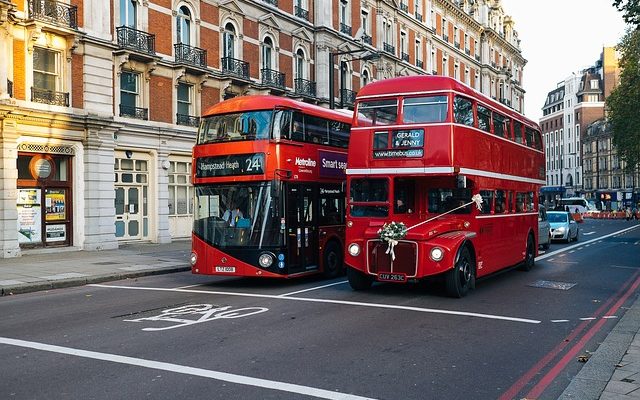
The Lord Moylan did concede that his imaginary vehicles would have the same function as a bus.
Alternatively, we could imagine a fleet of pods, so close they almost touch, could almost be connected, following the same route and allowing passengers on and off at certain points. 
Lord Moylan acknowledged the need for traffic lights to enable pedestrians to cross. That’s also where trains and automated vehicles would differ because the streets of London see far more foot traffic than its train tracks.
He also said that automated vehicles would be safer than human-driven ones are, in the same way computer-driven tube trains are. Indeed, the phrase “driverless tube” is a political one in London, but it refers almost exclusively to the debate as unmanned trains are yet to hit the underground.
It may actually be the underground train system that would be replaced, along with taxis, buses and privately owned, human-driven vehicles on the streets, by Lord Moylan’s vision of automated vehicles across London.
He further told the UK’s upper chamber that automated vehicles should be seen as addressing the “last mile problem” rather than longer distance travel issues.
Last mile logistics refers to the final step of a journey, be it for a parcel or a human. It’s most commonly considered as the final step of the delivery process from distribution center or facility to the end-user.
In the terms in which Lord Moylan is talking, it’s not about getting into London, but to your hotel once you’re there.
Booking an autonomous vehicle once you’ve arrived in London will no doubt ease the last mile for those that can afford it; hailing a black cab may be preferable to catching the tube, but all the traffic makes it excruciatingly slow!
But really it seems like a move that will impact London’s tourists and richest, without touching the experience of those living in the further reaches of the city. It might be slowest of all, but a bus journey is still (just about!) less than two pounds. Those without the means to afford premium transport options should still be able to travel.
Does America have better autonomous vehicles?
One reason that driverless cars were easier to integrate in the US is that such vehicles they do well on vast stretches of road where there aren’t likely to be sudden pedestrians to hit (or to avoid, depending on your point of view). The highway system in the US is therefore an ideal testing ground for the technology. It was once it had proved itself well enough to move into cities and serve as an automated cab driver that issues arose.
In fact, it’s gone so badly that the industry has had to beg US Transportation Secretary Pete Buttigieg for help. A coalition of lobbying groups sent Buttigieg a letter last week imploring him to support AV development or risk being outpaced by China. The subtext to this is the grounding of GM’s subsidiary, Cruise, after a crash involving one of its vehicles.
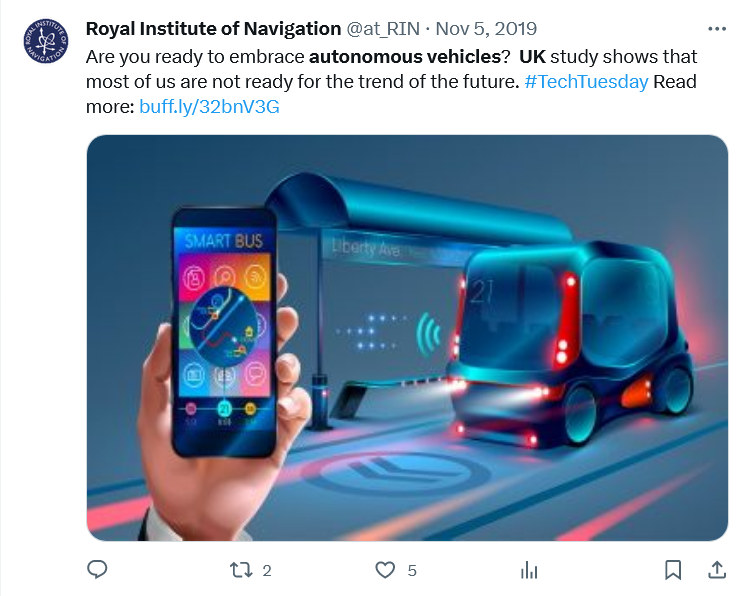
Autonomous vehicles – dividing the UK. Like almost everything else right now.
Now, following a two-year investigation into crashes that occurred in autopilot mode, Tesla has recalled two million cars. That recall applies to near enough every Tesla sold in the US since 2015, when the Autopilot feature launched. The news breaks a week after a former employee at the company told journalists the technology in the cars was unsafe.
So things are going really well with the technology.
Last week, the Guardian published a piece that states driverless vehicles have “failed miserably.” It goes on to argue that public transport is a much better focus. It’s worth pointing out that in context, Lord Moylan’s vision for autonomous vehicles is as a form of public transport.
Public transport (though after national privatization, perhaps it should be reframed as “transport the public may use occasionally, and at great cost”) is a tried and true solution to the problems driverless cars will apparently fix – if it’s done right.
It’s certainly possible that the more technological solution that is autonomous vehicles might go some way to fixing the same problems. But using them as a catch-all solution to avoid investing in public transport infrastructure is simply anti-public ideology masquerading as futurism. It’s the equivalent of pouring billions of pounds into the high-tech protein pill industry because you’re ideologically opposed to restaurants. No bad thing in isolation, but very poorly motivated and missing a lot of the point.
Oh, and invest in the freaking traffic lights – even in the automated future, interaction with street architecture will help avoid accidents like the ones that have dragged Cruise back a step.







